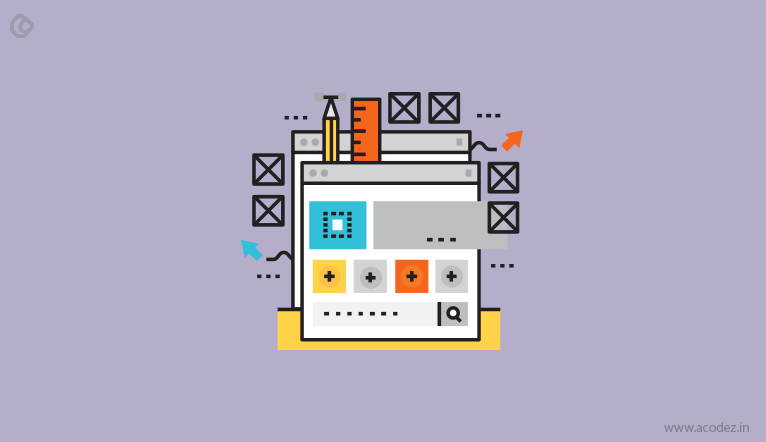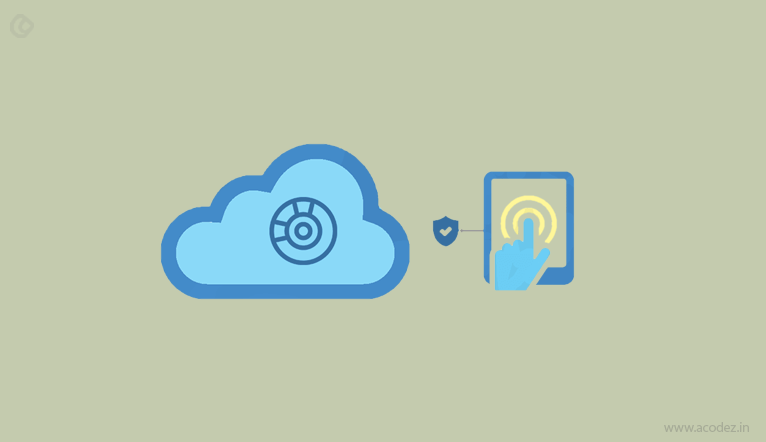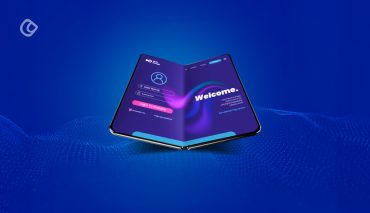The internet of things (IoT) is bound to change our lives – bringing about a revolutionary impact across our lifestyle, work routine, shopping, gaming and more. Though many processes are being implemented on IoT, there are still areas where people are doubtful about the implementation of IoT:
- Lack of understanding: It is the gap between what and why that stops people from adopting the very new technology of IoT. They are really unaware of the what are the benefits of IoT and why it should be used for their business,
- The initial setup is challenging: Often it happens that because of the lack of experienced hands, the setup process ends up in the wrong way – which means that the guaranteed smartness is not visible across automation through the process. The users trust is short lived.
- Security concerns are not yet solved: As we already discussed, when there is a lack of experienced professionals to handle the set up and installation process, it happens that there are possibilities of security breaches in a time where cyber crimes and cyber-attacks are on a rise.
Let us not consider these as grave concerns as they can be easily handled, which we would shed light on as we move across the article.
Remember the traditional days when internet was first launched. Many eyebrows were raised when it came to the question of how people would adopt this and would this be successful. In the initial days of its introduction, it was too expensive and dead slow and people had the least idea of what they could do online – as if there were many options for them to check out online unlike today. A few years later came the major breakthrough in the form of a human-centric design that brought about a tremendous increase in the number of internet users.
In fact, it is quite clear that the smart devices, capable of operating and gathering data in the real world – are capable of transforming our lives. But, the concern is how to use these for our benefit.
So, what exactly is IoT? It is nothing but high-level tech that is fast approaching and with all this, it brings the promise of smart and internet-connected devices that can intelligently act upon the data that it collected from the real world in real time. This is what has led many companies to invest whopping dollars to build IoT devices.
When we think about the possibility of a device to abstract, analyse and share information collected from across the globe to bring about a change in how the business is carried out across the engineering, shipping and logistics, marketing, health care, and real estate, sectors – then, why not say yes to a set of new possibilities. Though there are many who might question the benefits of switching on the air conditioner at your home while you sit at office (through Wi-Fi), but the potential of IoT is beyond belief.
There is a lot of hype surrounding the IoT devices and their growing popularity – which is partly a myth and partly true. These smart devices are being used and implemented by consumers, but not on a scale as discussed everywhere. In fact, there exists a gap between the actual utilization and the hype that we hear about the utilization of IoT devices.
Reports suggest that not less than 85% of consumers actually know what exactly the IoT is and those that know about it are actually not aware of its value. The IoT, as proven, is capable of replacing the swipes, touches and taps with gestures, automation and murmurs for controlling our environs if we are capable of utilizing its potential to the utmost extent, which is not as easy as it might seem to be as there are many hurdles before we actually reach this particular point.
There are certain factors that are holding back the service providers from reaching the point of full adoption of IoT. We will be examining those facts that will help us in the adoption of IoT, which is possible with good UX design strategies.
Mainstream adoption of IoT: challenges that are stopping this
There are several factors which when adopted can enhance the UX and further contribute to mainstream adoption of IoT. But, first let us find out what are the obstacles that are stopping this from actually happening.
The Gap Between Understanding and Practice

IoT has been devised as a solution to take care of a mainstream problem, which can be anything and everything from consumer behaviour to cognizant expectations and these might not be in line with the capabilities that the IoT devices are designed to offer.
The problem is that most of the times, it goes about with its functionality, but people are unaware of what is happening behind the screens – and even the presence of this IoT process is unknown to them. The fact is that most of the consumers these days have, on a minimum, one operable IoT device – for example, smartphone, T.V. or anything, including a recently manufactured car – but since they are unaware of the processes involved within IoT, the processes go unnoticed and hardly a few derive value from IoT.
How secure is the Device
While we think about the security of any device, unless the situation is something similar to leaving the keys of your house under the doormat of your front door while you are not around, the rest is blamed upon the service provider. It certainly is the fault of the service provider.
Because it was devoid of an exceptional cybersecurity measure, the system became vulnerable to a cyber scam or breach. Many a times, though fixed, there is no guarantee that it will be able to prevent another kind of a scam or breach from happening.
When there is a lack of experienced professionals to handle, deal, install and set up the devices, there is all possibility that things might go off track. Several instances of security breach across the smart devices that are IoT-enabled have been reported in the past. Anything could result in such breaches, including a factory defect, such as the default login credential used for the internal firmware.
Set Up and Utilization is a Miffed-Up Process

When you try to set up or integrate in a new IoT device within your present assemblage of internet-enabled devices, it is not easy. The process starts with reassembling all the existing components separately and then connecting them back together along with the newly added ones. But, the assembling and reassembling is not as easy as it might seem to be. Many a times, people fail in the process as they are trying to couple up entities that are in no way compatible with one another and hence fail to work in harmony.
When you couple up components that are non-compliant with one another, the result is sad and depressing as the user experience goes far apart from providing a promising one but instead a depressing one.
But, with UX design, we can get rid of almost all the IoT problems that we have discussed so far to a great extent.
As we discussed, just like how the breakthrough in human-centric design within the engineering domain brought about a considerable acceptance of the internet in its early stage, slowly if the UX and product designers step in, IoT will get its fair share of change that is far anticipated.
Let us find out more on how this can be accomplished
Let us train the users and make them a pro
As we discussed, the problem starts with your end users understanding of why they need IoT. So, before we start designing, we should ask why should they know or care about this.
Firstly, service providers should acquaint themselves to the fact that IoT is a facility in the technology that enhances the user experience and makes it better over time. Do you think a driver needs to know the functionality of all the internal parts within the engine to drive the car? Similar is the case with your IoT.
It is our responsibility to provide further insights to our users regarding the possibilities of a specific technology and how to utilize it for adding value to their lives. Your objective must be to train them to use and enjoy the benefits like a pro.
Machine learning in mobile apps development
Here is how we can achieve it
Generating a feeling or desire to excel at something they do:
No one is willing to buy or use something just because it has the name IoT related to it. The device should provide value and help them how further it would help them to evolve and make better decisions related to the concerned matter.
More Progressive And Visible Results
The post user experience or post UX is always an important step. It is how you help the user to view and experience the outcome after utilizing your product. How the product has helped change them or added value to their life over time – this is what matters when choosing the IoT implementation through great UX.
The Final Results would not Need any Further Explanation
Think about a scenario wherein you have purchased a tread mill and the service provider gave a clear picture on how to use it, and the benefits of using it regularly and routinely. Your major aim is to lose weight and you have been regularly using it and within weeks as promised by your tread mill dealer, you lost the expected weight. The result is before your eyes and all the people around you have the proof before them.
These users are pros and they would carry the quintessential word of mouth marketing, which is much needed when a new product arrives.
Let us Involve the Product Designers at an Early Stage

User research plays an imperative part in the success of IoT products. You will get what you invest in it. Whenever you conduct user researches, ensure that it goes through the proper steps avoiding the common pitfalls that leads to expensive and inappropriate decisions.
The most important aspect of your product design happens during the experience mapping phase. This is which enables you to get along with the end-to-end movement of your user’s decisions as they move on across the various touch points – helping you to provide a rather enhanced user experience.
An enhanced experience can be brought about only when you think and perform on the basis of your user’s requirements and emotions through each of the touchpoints that will help you to keep your focus on the design and functionality aspects of your product. All this will lead your user to become a pro. The touchpoints that are perfectly based on your inferences of how your user’s needs and behaviour changes will keep users engaged and bring in more users.
How a Compelling Change can Acquire user Trust
IoT devices are being used by people who are capable of doing things by themselves, but their expectations from the IoT devices differ and are further more. This actually is the most toughest part to move through and after their trust the device to take care of their needs and if it fails in providing the experience, the trust is broken beyond repair.
With good product design comes the security of users as well. It involves specific steps such as communicating requirements, reducing effort and friction that is needed in reaching a minimum security level and finally hiking the number of users that can take up their security by themselves while ensuring that the security is tight and strong.
These are the UX measures that can be implemented in bringing down the number of devices that can be affected by unauthorized factors – also often referred to as reducing the attack surface area.
Design should bring about a better experience rather than focusing on the screen
Now we see that touch screens are trending and while these are trending, if someone tells you that IoT devices come without screens – would you believe? Moreover, the use of visual interfaces are taking a leap behind – driven by data fed to device sensors or through voice.
Intentional design is crucial though the screens might be the primary interface retreating within the background.
Here are How Your UX Design Decisions will help in Creating and Designing Exceptional IoT Decisions:
How to Enhance the Experience
We will take you through some of the UX design decisions that will help you to improvise the performance while reducing the cognitive load rather than overloading it.
Now this will contradict our previous discussion wherein we were thinking over the lines why would a consumer want to use an internet-enabled device. Rather you should ask if connecting this to the internet would bring about an enhanced user experience.
Connecting Locally

We are designing for IoT and when designing for IoT internet-connectivity always-on could be a factor. So, it would be ideal to design it without internet connectivity and then check the functionality.
Upgradeable
Unlike phones that are smart, don’t think that your users will discard devices, such as washing machine or fridge, after a period of 1-2 years. They will continue using these for the next 5-10 years unless the machines happen to report some serious technical issue beyond repair. So, while you design ensure that it is capable of implementing in any of the new upgrades that will come over time.
Extensible
Remember that the awesomeness of your IoT devices does not fully live in the interactions between the device and the cloud service connected to it. The interaction happens between your device and other devices.
Ensure that you create APIs for the applications that you build.
Now let us Quickly Summarize What could Prevent you from Designing UX for IoT
Assortment of the Data Points and Interfaces
When the users try accessing IoT over a variety of devices, the kind of diversity that it brings about makes it difficult for accessing UX intangible over these devices.
Hardware Complexities
While we try to incorporate new components by reassembling and assembling the already existing system, we are disturbing and bringing about complexities within the hardware.
Connectivity
It is necessary that your IoT device be capable of operating offline rather than being capable of functioning online.
Third-Party Integrations are not Seamless
Again the same point, third-party integrations are not seamless as these seem to be. Imagine a user having to switch between two programs or screens which will exploit the user experience.
These are how the IoT could be affected by UX design
Do you think there are more ways in which IoT experience can be affected or further ways to improvise the UX design for IoT?
Then, feel free to send across your thoughts to us. We are waiting.
Acodez is one of the leading UX design companies in India. In due course of time, we have been able to work on about 700 projects all over the globe and help the businesses achieve their desired goals. The latest methods are implemented to provide a better user experience to the users which has helped us earn several awards.
Looking for a good team
for your next project?
Contact us and we'll give you a preliminary free consultation
on the web & mobile strategy that'd suit your needs best.










